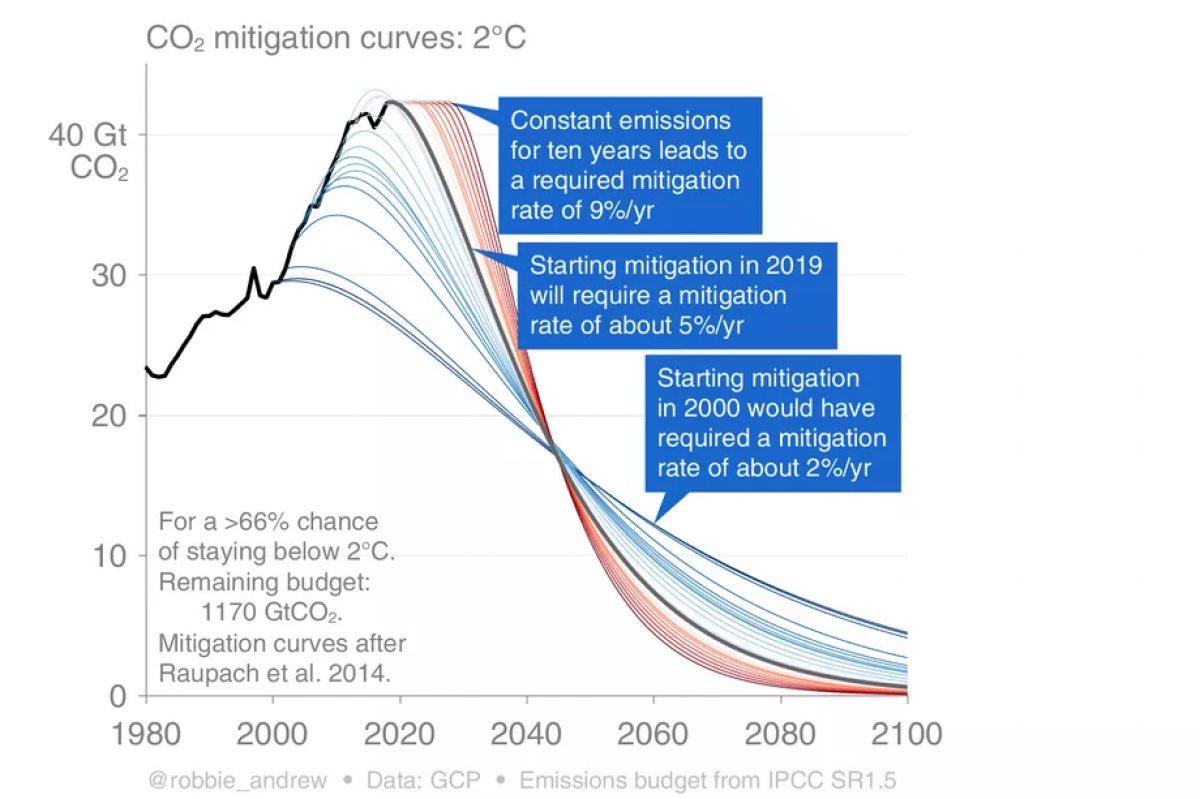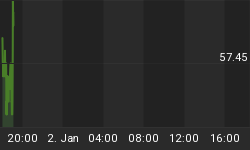Late last year, a study by the Intergovernmental Panel on Climate Change (IPCC) looked into exactly how much it will take to meet the climate change goals set by the Paris Agreement. The report, composed by the United Nations consortium of hundreds of climate scientists from around the world, found that if the world has any hope of reaching the climate change cutoff set by the Paris Agreement, the international community will have to transition to 100 percent clean energy by the middle of the century.
In the Paris Agreement (which polls show that most U.S. citizens still support, even after President Donald Trump backed out of the agreement in 2017) 186 countries agreed to cap still-rising global temperatures to less than 2° Celsius by 2100, with a goal of limiting warming to just 1.5 degrees Celsius above preindustrial levels. This is a serious challenge, the grand dimensions of which are made all the more clear by the IPCC’s findings.

(Click to enlarge)
As Vox reports in its article tellingly titled “The climate change policy with the most potential is the most neglected“, the transition toward clean energy “is underway — but getting all the way there is a daunting goal that will require researching and developing new products and services, especially in fossil fuel-intensive industries like concrete- and steel-making that have largely been neglected.”
The opinion piece from Vox goes on to argue that what the clean energy industry really needs in order to grow--and grow to a great enough extent to contend with the demands of the Paris Agreement--is a heavier focus on innovation, with much greater investment in research and development of new clean energy production methods. Related: Commodities Are Having A Stellar Year
Roberts is not the only person who thinks that innovation is the greatest hope for the future of clean energy. Effective altruism group Let’s Fund studied the issue of where climate change activism dollars are best spent, and they also found that, using a metric based on importance, neglectedness, and tractability, public spending on clean energy R&D is the most effective way to combat climate change.
Let’s Fund supports its “case for public clean energy R&D spending” with four main points:
- “Emission reduction in emerging economies matters most.”
- “Thus, ‘the best climate policies are those that stimulate clean energy innovation.’”
- “Public R&D creates the most spillover.”
- “Public R&D is woefully neglected but politically tractable.”

(Click to enlarge)
Currently, the charts for per capita carbon emissions are dominated by first world, developed economies including the United States, Canada, and Australia, whose emissions per person are more than double that of the average Chinese citizen. However, as energy demand continues to grow around the world, paired with rapidly growing populations and an ever-expanding middle class, developing nations like India and China will account for 75 percent of global emissions by 2040.

(Click to enlarge)
This means that in order to meet climate change goals, we need to stop focusing only on the first world and start asking how we can make clean energy accessible for every nation at every economic stage of development. As Roberts writes for Vox, “Advanced economies could flatline their emissions tomorrow and all would still be lost[...] The only thing that might work is making clean energy cheap and then sharing it with those economies (technology “spillover”). Cheaper clean energy technology is a global public good, and advanced economies are both morally obliged and economically well-positioned to provide it.”
While for some experts the need for and the viability of dramatically increasing investment in clean energy research and development, almost no one is actually doing it in practice. While 24 countries and the European Commission have all promised to double their own clean energy R&D spending, very few of those countries are following through with their pledge, with the majority on track to increase spending by just 50 percent.
By Haley Zaremba for Oilprice.com
More Top Reads From Safehaven.com:


















I am all for R & D in the energy space, as current Solar and Windmill technology is a joke for powering the grid.
I am 100% against inferior technology that kills birds, raptor, and bats.